New entrants to the field as well as artists using machine learning and augmented creativity tools since long before art tech became a thing are trying to figure out where they stand with the technology they use, Chitralekha Basu writes.
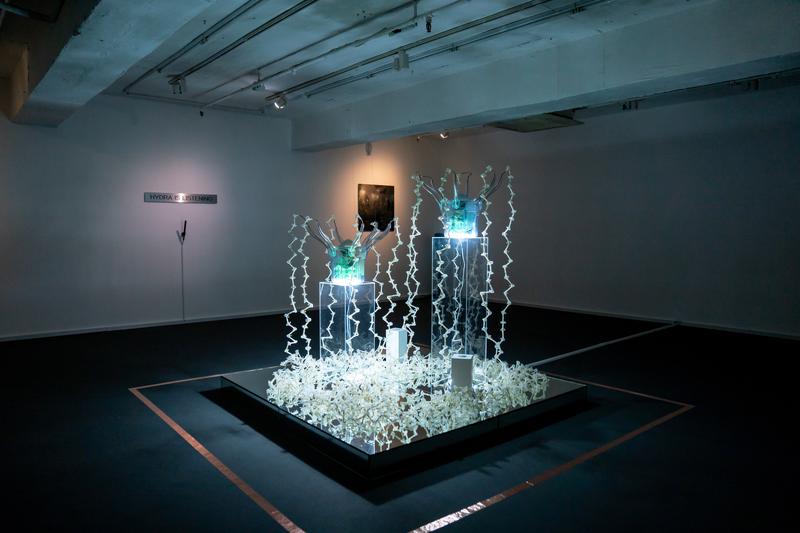 Roberto Alonso Trillo and Marek Poliks co-created Hydra, an illuminated sound installation system that records and plays back the sounds in the room while oozing endless streams of poly nodes. On view at Osage Gallery. (PHOTO PROVIDED TO CHINA DAILY)
Roberto Alonso Trillo and Marek Poliks co-created Hydra, an illuminated sound installation system that records and plays back the sounds in the room while oozing endless streams of poly nodes. On view at Osage Gallery. (PHOTO PROVIDED TO CHINA DAILY)
Hong Kong’s biennial New Vision Arts Festival (NVAF) has sought out groundbreaking works since it began in 2002. It remains “unwavering in promoting Arts Tech,” Anne Tsai, senior manager of the Festivals Office, Leisure and Cultural Services Department, writes in the 2022 brochure. During an interview, however, she clarifies that NVAF’s focus is on “showcasing innovative works, rather than advanced technology”.
This year’s festival featured a number of tech-themed productions where the application of technology was kept to a minimum. Tsai mentions Akram Khan Company opting for a spare digital scenography in Jungle Book reimagined instead of shipping the elaborate sets from its UK run in order to minimize the environmental impact. It was a befitting gesture, considering the production shifts the Indian rainforest backdrop of Rudyard Kipling’s story to a climate dystopia. And Yan Pat-to’s Posthuman Condition, which imagines a future where a child born without a behind is fitted with a “cyber buttock”, wasn’t exactly a high-tech production, Tsai reveals.
 Scenes from HACK: GayBird Leung performs live. (PHOTO PROVIDED TO CHINA DAILY)
Scenes from HACK: GayBird Leung performs live. (PHOTO PROVIDED TO CHINA DAILY)
As the buzz around art tech grows louder, more artists are stepping out of their comfort zones to give technology a shot. For some of them, technology is proving to be both tool and resource — and, in some cases, an inspiration.
Known for his mastery of the craft of physical theater, Ata Wong Chun-tat, artistic director of Theatre de la Feuille, found pastures new with HACK, also in the NVAF lineup. He teamed up with composer and new media virtuoso GayBird Leung to co-create a production featuring sophisticated automation and an industrial soundscape performed live by the latter.
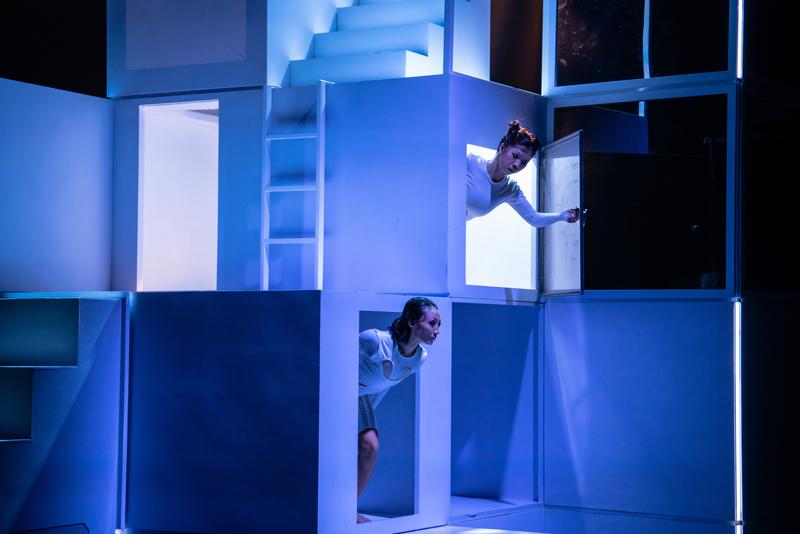 A partially automated set represents a computer system, breached by performers playing viruses. (PHOTO PROVIDED TO CHINA DAILY)
A partially automated set represents a computer system, breached by performers playing viruses. (PHOTO PROVIDED TO CHINA DAILY)
The play germinated out of Wong’s musings on our growing tech dependence. “It led me to ask myself what would happen if we lost technology now, or technology can no longer be separated from us?”
An army of computer malware infiltrates a mainframe in HACK. Performers playing viruses in a rogue program move like automatons but also mimic human behavior when they sniff around for breaches in the system or band together to keep the enemy (antivirus?) out. The neon-lit set comprises two flights of stairs and automated stacked boxes. A featureless robotic dog underscores the play’s programed environment.
Wong says the performers’ ability to present a de-humanized persona of themselves is owed to the production design to a large extent. “Performers are directly affected by the environment,” he states.
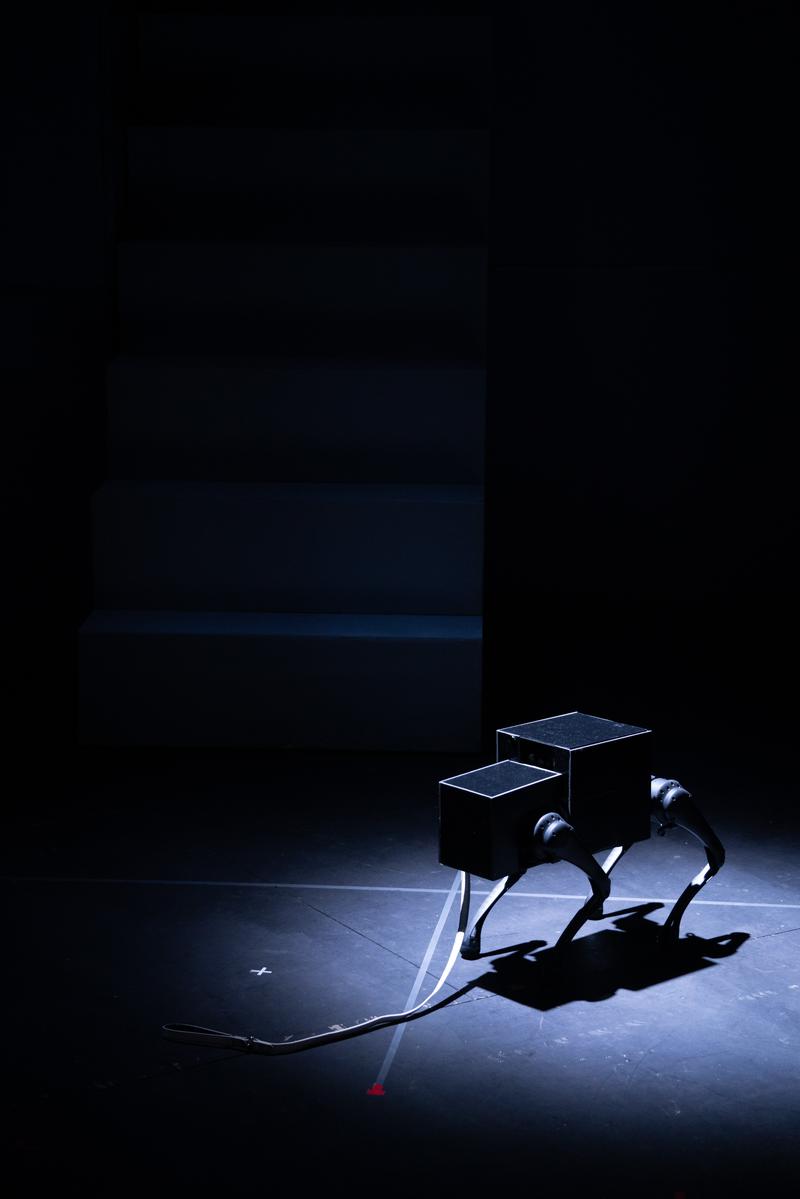 A robotic dog underscores the show’s mechanized feel. (PHOTO PROVIDED TO CHINA DAILY)
A robotic dog underscores the show’s mechanized feel. (PHOTO PROVIDED TO CHINA DAILY)
Backstage tour
As more artists discover the thrills of working with cutting-edge technology, many of them are inviting audiences to partake in the processes involved. In 2017, the experimental theater group Zuni Icosahedron presented a series focused on sets, lighting and sound — three vital technical components required to make a stage show — in the form of live theater. The spotlight was turned on plot agnostic technology, pitched as worthy of the audiences’ attention in and of itself.
 Descendant is a machine-learning generated dance piece based on a dataset of movements by dancer Sudhee Liao. Available to view both as virtual reality and video installation at Osage Gallery, it’s part of Machine Visions, a showcase of AI-generated art, music and dance, co-created by Peter Nelson, Roberto Alonso Trillo and Marek Poliks. (PHOTO PROVIDED TO CHINA DAILY)
Descendant is a machine-learning generated dance piece based on a dataset of movements by dancer Sudhee Liao. Available to view both as virtual reality and video installation at Osage Gallery, it’s part of Machine Visions, a showcase of AI-generated art, music and dance, co-created by Peter Nelson, Roberto Alonso Trillo and Marek Poliks. (PHOTO PROVIDED TO CHINA DAILY)
Such experimental endeavors continue. In November Zuni revisited One Hundred Years of Solitude — an abstract theatrical experience inspired by Gabriel Garcia Marquez’s novel and staged by the company for the first time in 1982. Its 11th retelling was a 12-hour marathon without dialogue or a discernible plot. The play’s immersive scenography spilled out of the boundaries of the proscenium stage, sweeping across the walls and floor of the auditorium, putting the audience, literally, under the spotlight. Presented with live music and a recorded reading from the novel by Danny Yung, the visuals comprised mainly projections of video footage from past editions of the production. The show served as both a documentation of its own evolution as well as a fresh take on a time-tested story — an iteration that resonates with our digitally encompassed present.
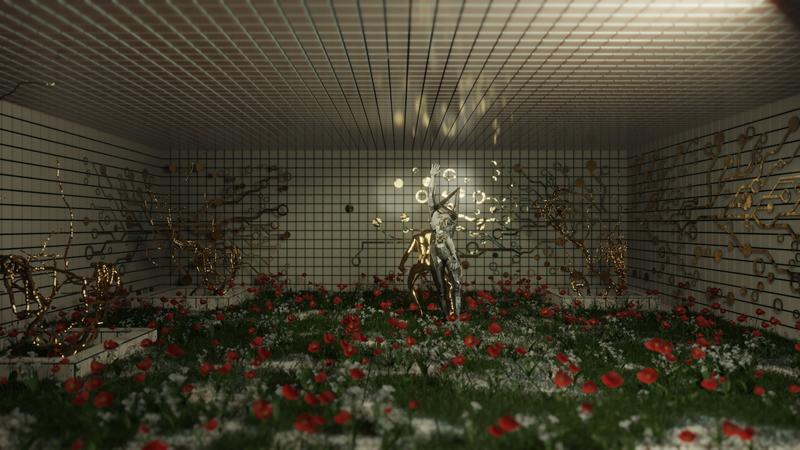 Descendant is a machine-learning generated dance piece based on a dataset of movements by dancer Sudhee Liao. Available to view both as virtual reality and video installation at Osage Gallery, it’s part of Machine Visions, a showcase of AI-generated art, music and dance, co-created by Peter Nelson, Roberto Alonso Trillo and Marek Poliks. (PHOTO PROVIDED TO CHINA DAILY)
Descendant is a machine-learning generated dance piece based on a dataset of movements by dancer Sudhee Liao. Available to view both as virtual reality and video installation at Osage Gallery, it’s part of Machine Visions, a showcase of AI-generated art, music and dance, co-created by Peter Nelson, Roberto Alonso Trillo and Marek Poliks. (PHOTO PROVIDED TO CHINA DAILY)
“I am always thinking of ways to translate digital experiences into a physical space,” says Zuni’s co-artistic director Mathias Woo. Creating an environment where the audience is made to feel like stepping inside an iPad is one such way. However, Woo hastens to add, that while he’s evolved a theatrical form modeled after the idea of digital screens sucking the user in like a vortex, the content is vastly different from what such human-machine interfaces usually have to offer. For him these “playful physical playgrounds” serve as the locus of creating meaningful experiences, including interactive sessions based on chanting and meditation exercises with a view to cultivating mindfulness.
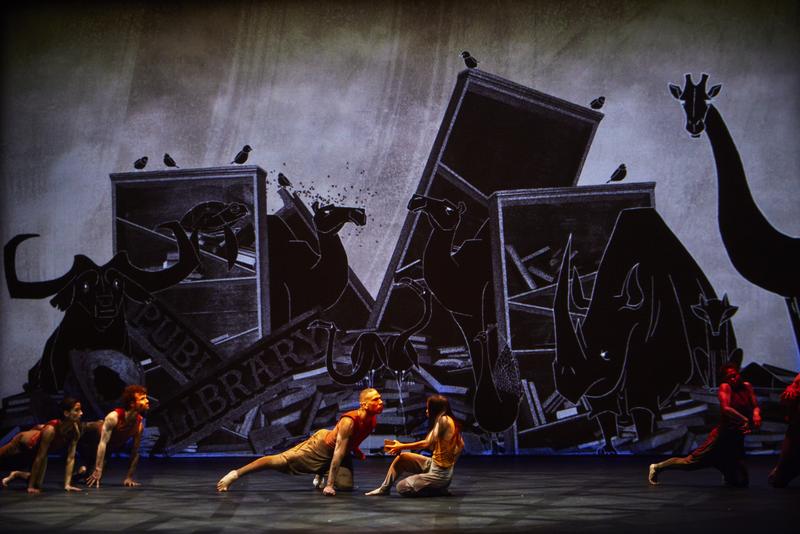 In Jungle Book reimagined, hosted by New Vision Arts Festival, digital scenography was used to avoid shipping elaborate sets from the original UK production in order to minimize environmental impact. (PHOTO PROVIDED TO CHINA DAILY)
In Jungle Book reimagined, hosted by New Vision Arts Festival, digital scenography was used to avoid shipping elaborate sets from the original UK production in order to minimize environmental impact. (PHOTO PROVIDED TO CHINA DAILY)
Theater of art
Seasoned new media artists from Hong Kong’s academic circles have been using blockchain and artificial intelligence to make art since well before art tech officially became a thing, following former Hong Kong chief executive Carrie Lam Cheng Yuet-ngor’s 2020 Policy Address. And a bit of navel gazing, i.e., instances of artists making works about navigating their way through a certain technology, using said technology, are not that uncommon.
Maurice Benayoun, a professor at City University of Hong Kong’s School of Creative Media, put together an elaborate neuro-design blockchain-based art project hosted by Osage Gallery at Asia Society Hong Kong in November. VoV: Morphogenesis of Values invites viewers to give shape and form to a human value — say hope, or peace — by using brainwaves. Participants (Brain Workers, according to the exhibition lingo) wear a wireless brain sensor to transmit brainwaves in order to sculpt the image — an elusive and amorphous mass of color, flitting across a digital screen. In return they receive VoV (value of values) tokens which look like random doodles made by a preschooler but are in fact “characters” representing human values. Once added to a viewer’s non-fungible token wallet, these can be converted into images (twodees) or sculptures (threedees). They can also be traded, stock market-style, in a Value Trading Room, where the data on the ranking of values in different cities around the world is displayed and updated in real time.
 In Maurice Benayoun’s VoV: Morphogenesis of Values, viewers are invited to (above) sculpt digital images of human values using brain sensors and trade the NFTs they get in return for their labor, stock-market style. (PHOTO PROVIDED TO CHINA DAILY)
In Maurice Benayoun’s VoV: Morphogenesis of Values, viewers are invited to (above) sculpt digital images of human values using brain sensors and trade the NFTs they get in return for their labor, stock-market style. (PHOTO PROVIDED TO CHINA DAILY)
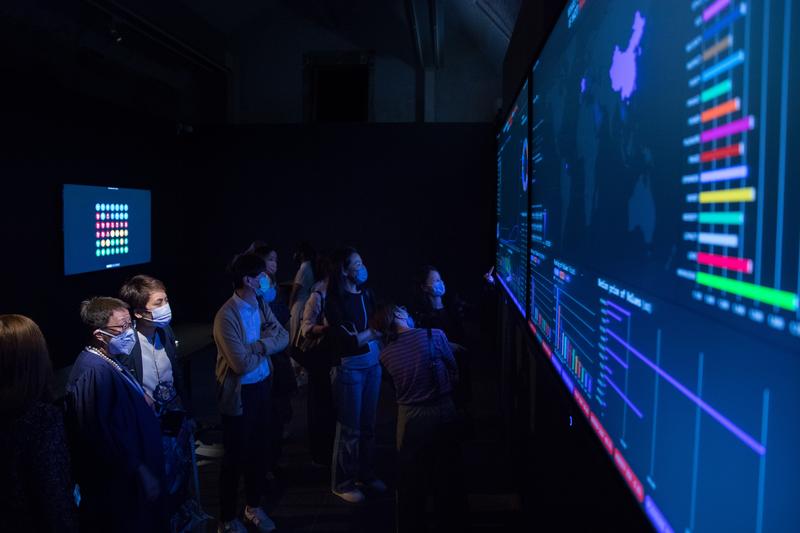 In Maurice Benayoun’s VoV: Morphogenesis of Values, viewers are invited to sculpt digital images of human values using brain sensors and (above) trade the NFTs they get in return for their labor, stock-market style. (PHOTO PROVIDED TO CHINA DAILY)
In Maurice Benayoun’s VoV: Morphogenesis of Values, viewers are invited to sculpt digital images of human values using brain sensors and (above) trade the NFTs they get in return for their labor, stock-market style. (PHOTO PROVIDED TO CHINA DAILY)
Louis Yu, director of Cultureisbeam, and a veteran of Hong Kong’s arts management scene, was taken by the ingenuity involved in imagining human virtues as salable commodities. “The show explores the complicated meaning of the word value which represents both human values and monetary value,” he remarks. He also liked that the artist was using a technology to make a critical comment on the same.
The self-referential nature of new media art is also in evidence at Osage’s ongoing Machine Visions series. Visual artist Peter Nelson and musician Roberto Alonso Trillo, both professors at Hong Kong Baptist University (HKBU), partnered with creative technologist Marek Poliks to produce a showcase of AI-generated images, sculptures, music and dance.
A highlight of the show is an illuminated sound installation sculpture called Hydra — a set of transparent jars oozing incessant streams of poly nodes through its multiple spouts. The look and feel is that of a living, breathing, vibrating, gasping organism, procreating endlessly, as it lets out ear-splitting shrieks under induced labor.
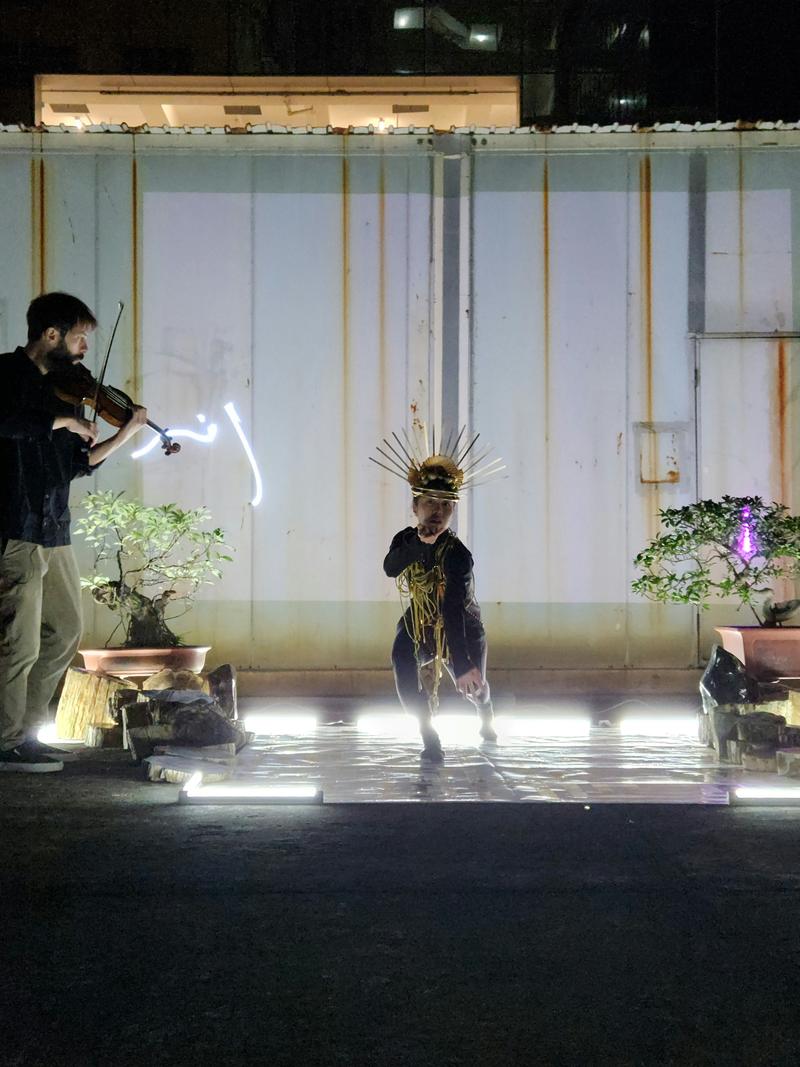 Roberto Alonso Trillo and Sudhee Liao perform at Osage Gallery, simultaneously with machine learning-generated art, music and dance. (PHOTO PROVIDED TO CHINA DAILY)
Roberto Alonso Trillo and Sudhee Liao perform at Osage Gallery, simultaneously with machine learning-generated art, music and dance. (PHOTO PROVIDED TO CHINA DAILY)
It is viewers who contribute the audio, to a large extent. The piece “records sounds (in the room) that are uploaded to the cloud for training using Demiurge (a music machine-learning platform) and played back after a few days. It responds to perceived sounds in real time by increasing and decreasing the playback intensity and movement of the tentacles’ nodes,” Alonso Trillo explains.
Built using mostly transparent, and translucent, materials — latex, silicone, nylon and poly nodes — the installation alludes “to the imagery of the water hydras,” the artist notes. The see-through finish, he says, is also emblematic of “our approach to the use of AI and related creative processes — an attempt to move away from the dominant black-box paradigm”.
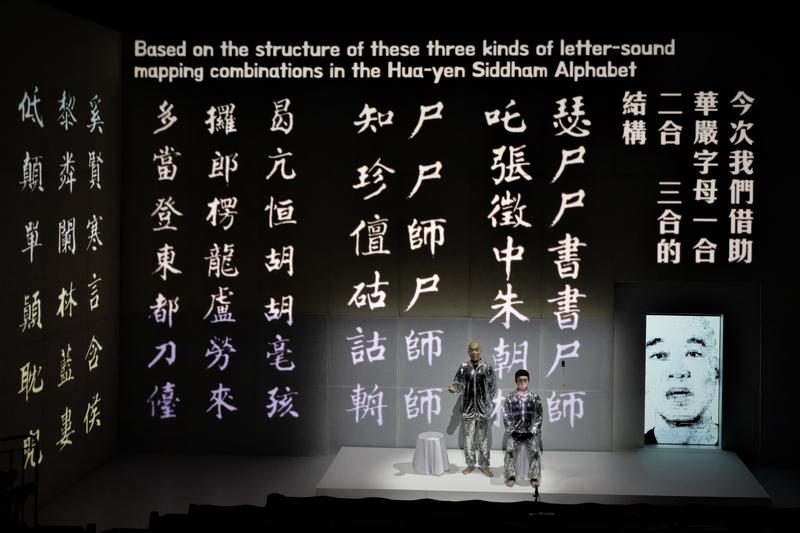 In Zuni Icosahedron’s Hua-yen Buddhaverse, immersive digital technology is used to lead viewers through guided meditation. (PHOTO PROVIDED TO CHINA DAILY)
In Zuni Icosahedron’s Hua-yen Buddhaverse, immersive digital technology is used to lead viewers through guided meditation. (PHOTO PROVIDED TO CHINA DAILY)
Getting on with AI
When Sudhee Liao watched a machine learning system trained on a dataset of her own dance movements “perform”, it felt surreal. Titled Descendant, the performance, available in both video and virtual reality versions, is the result of a creative confluence involving Liao, Alonso Trillo, who plays the violin, and Nelson who helped fine-tune the images generated by the sophisticated music-to-motion synthesis system.
It took the trio several rounds of trial and error to arrive at the final cut. Liao danced to different styles of music played by Alonso Trillo while Nelson tried “working out how to visualize the AI-generated motion in 3D in a way that captures some form of emotion and expression”. Eventually, the AI dancer picked up some of Liao’s natural flexibility and ease with movements. A prism-shaped head was added to the dancing figure to underscore its distinction as nonhuman.
The entire cast of characters from Descendant came together for a performance on the Osage Gallery terrace where Liao danced alongside her own AI avatar.
“Although there was some latency, I could recognize myself in the AI dancer’s moves,” she says. “As humans, we sometimes knowingly or unknowingly fall into patterns. In some way, the AI dancer made me challenge myself by not following my internal algorithms.”
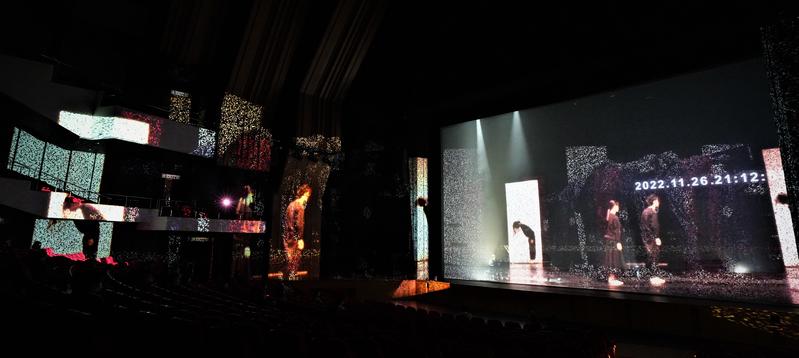 Zuni Icosahedron’s 11th iteration of One Hundred Years of Solitude was a 12-hour marathon. Spilling out of the proscenium stage, this immersive show played across every available surface in the auditorium. (PHOTO PROVIDED TO CHINA DAILY)
Zuni Icosahedron’s 11th iteration of One Hundred Years of Solitude was a 12-hour marathon. Spilling out of the proscenium stage, this immersive show played across every available surface in the auditorium. (PHOTO PROVIDED TO CHINA DAILY)
For Liao, the experience also sparked a question the likes of which is bound to surface in the mind of any artist working with AI at some point: “Can this AI create its own artistically compelling choreography?”
Jeffrey Shaw, chair professor at the Academy of Visual Arts, HKBU, responded to the anxiety over whether AI will eventually make artists irrelevant at a Business of IP Asia Forum held earlier this month.
“The identity of the artist is not lost, and neither amplified by these extraordinary new tools,” he said, adding that the “truly artistically meaningful” AI-assisted works happen to be the ones that are “highly idiosyncratic and totally personal”, bearing the marks of the artist’s signature style.
“It means the identity of the artist is not lost, rather amplified by their access to these extraordinary new tools,” he added.
If you go
Machine Visions
Date: Through Feb 4, 2023
Venue: Osage Gallery 4/F, 20 Hing Yip Street, Kwun Tong


